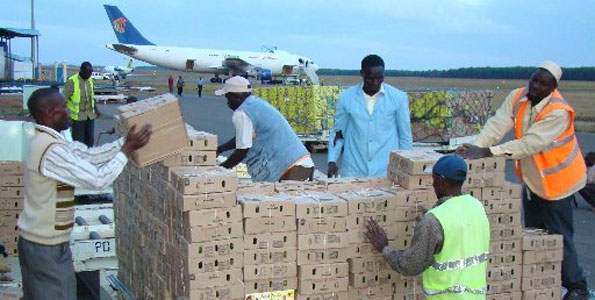Lion’s share for civil servants
Finance and Economic Development Minister, Professor Mthuli Ncube, plans to spend $4,2 trillion in 2023, with 78 percent of that money coming from tax revenue and the bulk going toward employment costs, a development analysts say will improve disposable income and show up demand.
The total expenditure is comprised of $3,7 trillion allocated to line ministries and independent commissions, loan repayments amounting to $248,6 billion and $532,6 billion allocated to constitutional and statutory appropriation.
During the budget formulation process line, ministries had submitted total bids of over $8,7 trillion.
A GDP growth rate of 3,8 percent is projected in 2023.
Presenting the 2023 National Budget Statement at the new Parliament building in Mt Hampden yesterday, Mthuli said the bulk of the spending at 52,4 percent or $2,2 trillion will go towards employment costs.
In 2022, employment costs stood at 42,3 percent of the National Budget.
The increase in the employment cost level is on account of the need to cushion civil servants against the impact of global economic challenges and domestic price increases, according to Mthuli.
Economic analyst, Kudakwashe Mugova, said the decision to spend more on employment costs at 52,4 percent of total expenditure (excluding loan repayments) up from 42,3 percent last year, will improve on aggregate demand.
“It helps reduce the brain drain that has been affecting a number of sectors, especially healthy sector. We must also remember we are going into an election year.”
He, however, said the downside is that there will be a slowdown on infrastructure projects.
Economist Dr Reneth Mano said on the upside, “better paid civil servants are motivated to deliver more public services and not as susceptible to corruption deal making with private sector.”
He, however, said more expenditure on employment cost means less fiscal resources on operational budgets of public service delivery institutions (hospitals with well-paid nurses, but no drugs, schools with well-paid teachers but no books or internet).
“There is scope for Government to rationalise the number of people employed to deliver public service in order to ensure that the budget for provision of consumables required for service delivery is actually adequate and optimal for number of civil servants employed.”
He said the Government can take optimal advantage ICT to reduce human interface in some routine public service delivery operations.
Former Zimbabwe Congress of Trade Unions (ZCTU) president Peter Mutasa expressed fear that “the dual evils of inflation and currency devaluation would have rendered these allocations nugatory,” by next year.
“In nominal terms there seems to be some increase on employment, but in real terms this increase assuming same levels of workers will not match inflation and currency devaluation movements.”
Mutasa called for sober minds to address the real economic fundamentals which is “the currency issue”.
“The Minister is well aware that he will have to add on some billions if not trillions on this budget before mod year.”
Spending on employment costs will be followed by the use of goods and services at 17, 5 percent and net acquisition of non-financial assets at 15,5 percent.
Provision for net acquisition of non-financial assets of $650 billion (3 percent of GDP), provides for the development budget of $486.9 billion and other capital expenditures of $163.1 billion.
Infrastructure, which has been getting a significant portion of the budget in the last few years, is not getting much as government will priorities completion of ongoing infrastructure projects, before commencing new projects.
Tax administrative efficiencies and the implementation of numerous measures to increase tax compliance are expected to contribute significantly towards the attainment of the projected revenues which will come mostly from tax revenue of $3,5 trillion (16 percent of GDP) and non-tax revenue of $369,7 billion (1,7 percent) in 2023.
This will leave an overall deficit amounting to $336,9 billion and net loan repayment amounting to $248,6 billion, which will be financed through VFEX bond issuance valued at $95,2 billion or US$100 million; external loan disbursement of $398,2 billion equivalent, Treasury bill issuances ($82,2 billion) and changes in bank balances ($10 billion).
Mthuli said the Treasury bond issuances of US$100 million will be issued in tranches through the Victoria Falls Securities Exchange (VFEX), specifically for infrastructure development targeting roads rehabilitation and irrigation infrastructure.
The external loan disbursement of $398,2 billion comprises of an expected loan facility of US$400 million from Afreximbank still undergoing approval processes and existing loan disbursements from OFID, IFAD and BADEA, he said.
For 2023, Mthuli said the Government will only borrow 5,75 percent of GDP.
This, Mthuli said, is informed by the level of the budget deficit and the Government’s capacity as guided by Public Debt Management Act.
Mthuli is also expecting development partner support amounting to US$352,8 million mainly targeting social sectors and governance programmes.
The total expected in 2022 amounts to US$776 million with US$638,3 million already received.
Commenting on revenue generation, Mutasa said there is need to deal with revenue leakages that are constraining fiscal space.
He said the country is losing money through mineral resources smuggling, arbitrage, endemic corruption as well as missed opportunities because of failure to address the political risk factors.
“All these if addressed could have a positive structural change to our economy which will lead to more jobs and decent wages,” said Mutasa.
Threats to growth
The 2023 National Budget is, however, not without risks.
According to Mthuli, the main sources of fiscal risks to the 2023 National Budget execution include the pass-through effects of global shocks, macroeconomic and climatic shocks, expenditure risks and contingent liabilities from State-Owned Enterprises (SOEs).
“Although the fiscal risk categories can be clearly defined, they are inter-dependent and reinforce each other,” he said.
On the global front, Mthuli said further worsening of geopolitical tensions, which have resulted in high prices of energy, fertiliser and food, necessitating tightening of monetary policies by most Central Bank, has the potential to slow down domestic economic growth by between 0,4 percent to 1,8 percent.
“On the domestic front, climatic and weather-related risks, particularly, the uneven distribution of rainfall and electricity supply challenges may compromise the attainment of the projected growth,” he said.
The country is likely to continue to face inflation and exchange rate risks, Mthuli said.
High inflation and continuous exchange rate depreciation pose a major risk to the 2023 Budget, through reducing nominal and real value of revenue collections.
“The overall impact of high inflation and continuous exchange rate depreciation is widening the budget deficit,” Mthuli said.
Inflation will also worsen public debt.
According to the minister, increases in inflation beyond the projected level has the impact of increasing the stock of external debt in local currency, given that 60 percent of the country’s total debt is denominated in foreign currency.
Deviation of inflation and exchange rate from target may result in adverse fiscal outcomes to as much as -5,3 percent.
To mitigate the inflation and exchange rate risks, Government will continue with the current policy thrust of maintaining tight fiscal and monetary policies.
Other highlights
To promote use of the banking system, Mthuli proposed to align the 4 percent IMTT on foreign currency transactions to local currency transactions at a rate of 2 percent.
VAT has been adjusted upwards to 15 percent from 14,5 percent.
He said Government will consider reviewing other measures to strengthen the foreign currency system, including the 20 percent surrender requirement for domestic foreign currency transactions.
On mineral royalties, Mthuli said 50 percent should be in the form of purity or quality of the mineral concerned as maybe prescribed; 10 percent in foreign currency cash; and 40 percent in local currency.
The Minister also plans cash budgeting and no recourse to central bank borrowing.
In support of the new measures including containment of money supply, the Reserve Bank of Zimbabwe is expected to target month-on-month inflation of between 1 and 3 percent as well as review the financing of surrender requirements.-ebusinessweekly









